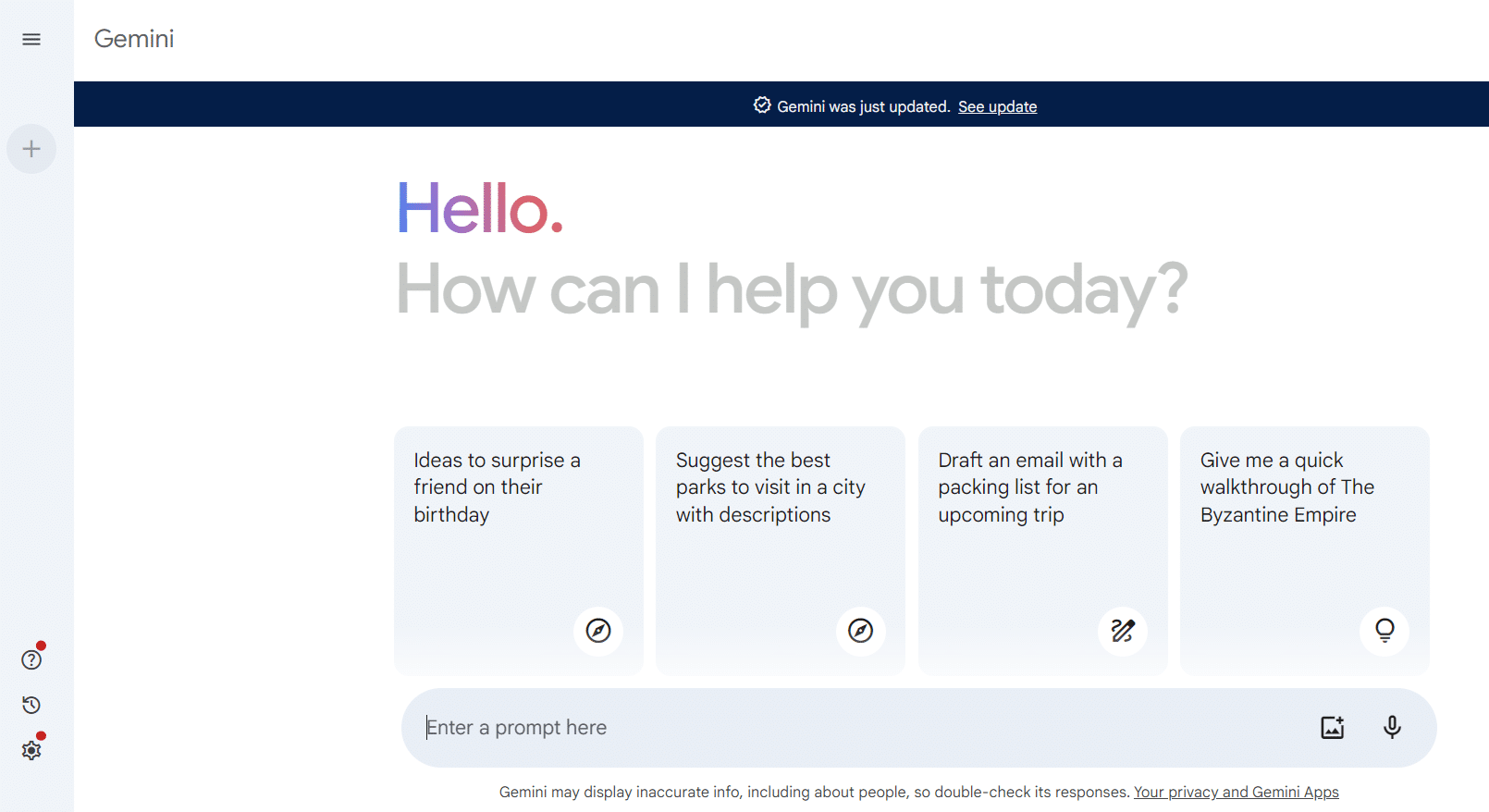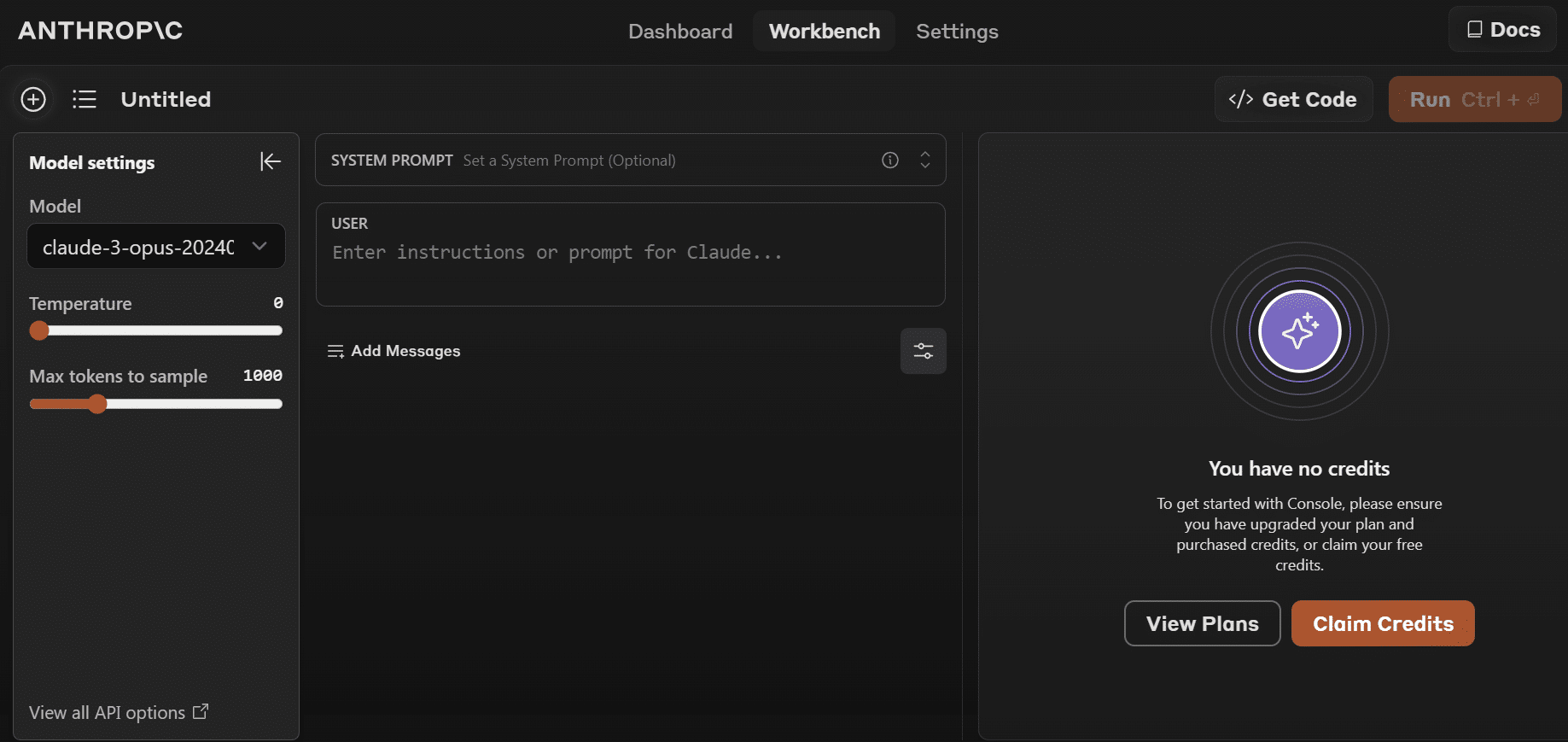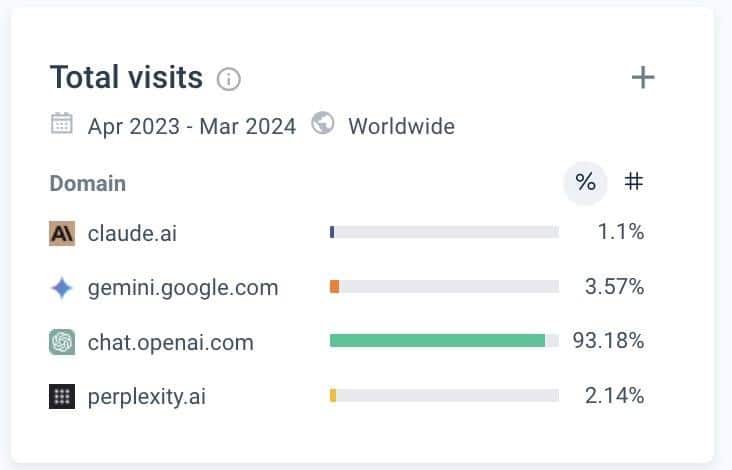At Bring, we live and breathe traffic. If we cannot see an increase in website traffic for our clients, there is no value. Search engines have always been a prime source of good-quality, high-volume traffic. However, things are changing, and we need to adapt. With the growing tsunami of AI tools and chatbots, we set out to explore which ones refer web traffic to other websites, and learn how we can leverage them.
For the research, we chose four chatbots:
1. Google Gemini

2. Chat GPT

3. Perplexity

4. Claude

Over the past 12 months, each has seen varying volumes of inbound traffic, with ChatGPT the most popular, and commonly used for SEO purposes. Since Google renamed Bard to Gemini and changed the subdomain, traffic to Gemini.google.com is still growing. The lesser-known websites, Perplexity and Claude, see good volumes of traffic. Claude appears to be experiencing good growth, showing a 32% increase in visits over the past three months.

Our aim wasn’t to compare each bot and its functionality; there are already plenty of good articles that do this:
The best AI chatbots: ChatGPT isn’t the only one worth trying
The best AI chatbots in 2024
AI Chatbots: Our Top 20 Picks for 2024
We wanted to know which AI chatbots can help boost website traffic, once a user has asked a question, which ai tool is sending traffic to other websites? As I said, we live in the world of traffic.
Outbound Traffic for Four Chatbots
Using Similarweb data, here’s a summary of the outbound referral traffic data for the four chatbots (Claude.ai, Gemini, Perplexity.ai, and chat.openai.com).
| Chatbot | Total Outbound Visits | % Visits to Google | Top Visited Domains (besides Google) |
|---|---|---|---|
| Claude.ai | 21,300,000 | 87.41% | YouTube, Wikipedia, Facebook, Twitter, News websites (Social media & news bias) |
| Gemini | 14,500,000 | 99.79% | None (Strong Google bias) |
| Perplexity.ai | 16,900,000 | 10.27% | News Websites (Turkish & health), Research Gate, Reddit, social media (Highly varied) |
| chat.openai.com | 127,000,000 | 81.77% | OpenAI.com, YouTube, Grammarly (OpenAI & other |
Our Analysis:
The data reveals a clear difference in how each chatbot directs user traffic:
- Gemini: Exhibits the strongest bias, sending a staggering 99.79% of traffic to Google. This suggests a potential limitation regarding user exploration and a clear strategic partnership with Google.
- Perplexity.ai: Its traffic distribution is the most diverse, with Google receiving only 10.27%. Users are directed to various websites, including news, health, research, social media, and reference materials.
- Claude.ai and chat.openai.com: Both show a moderate bias towards internal resources (Claude.ai to social media and news, chat.openai.com to OpenAI.com). Still, they send a significant portion of traffic to Google (87.41% and 81.77%, respectively) and other websites.
Key Takeaways:
- The choice of chatbot can influence users’ browsing behaviours.
- Perplexity.ai offers the most open browsing experience with the least bias.
- Claude.ai and chat.openai.com provide a mix of internal resources and external links.
- Gemini exhibits a strong bias towards Google, potentially limiting user exploration.
Limitations:
- This analysis is based on the top 10-22 visited domains provided in the images. Other destinations may receive smaller amounts of traffic.
- The data doesn’t reveal the context or purpose behind the clicked links.
- The data source is Similarweb.
Which AI Chat Bot We Choose For Traffic
What do we think about these AI chatbots in digital marketing and the traffic they send? Perplexity.ai is our preference, with very little bias against any websites. Claude is another one we want to watch as its popularity grows. Seeing Gemini send all traffic to other Google domains was no surprise. Unfortunately, both Perplexity and Claude’s Australian website traffic is still a long way behind ChatGPT’s, and we fear that with the massive lead both GPT and Gemini have, the others will not be moving the referring web traffic needle anytime soon.
Thankfully, web traffic from Australia for all these tools is growing significantly month on month, Claude increased web visits by 248% MoM and Perplexity 43% MoM. We’re looking forward to see how these two grow in the coming months.

Frequently Asked Questions
What is outbound referral traffic and why is it important?
- Outbound referral traffic refers to visitors who leave one website and land on another by clicking on a hyperlink. This metric is crucial for businesses because it not only helps in increasing the visibility and authority of a website but also drives potential customers to their site. High-quality referral traffic is often associated with improved conversion rates, as it typically involves users who are actively interested in related content or services.
How do AI chatbots influence web traffic?
- AI chatbots can significantly influence web traffic by directing users to external websites based on the queries they process. For instance, when a user asks for information, the chatbot may provide a link to a relevant article or resource. This ability makes chatbots powerful tools for increasing web traffic and engagement, particularly if they are programmed to recommend resources that align with the user’s interests or needs.
Why does the source of traffic matter to businesses like Bring?
- The source of traffic matters immensely because it affects both the quantity and quality of the traffic received. High-quality sources tend to send visitors who are more likely to engage meaningfully with the content, potentially increasing conversion rates. For a digital marketing agency like Bring, understanding traffic sources helps optimise marketing strategies and tailor efforts to attract the most beneficial visitors.
What are the differences in traffic distribution among the chatbots discussed?
- The chatbots featured in your post show varied patterns of traffic distribution:
- Claude.ai and chat.openai.com tend to direct a substantial portion of traffic to both Google and other significant domains like YouTube and OpenAI.com, suggesting a mix of internal and external resource bias.
- Gemini shows an overwhelming bias towards Google, likely due to strategic alignment or design, with almost all of its outbound traffic directed there.
- Perplexity.ai exhibits the most diverse outbound traffic, directing users to a wide array of sites, which indicates a less biased and more exploratory user experience.
Why does Gemini have such a strong bias towards Google?
- Gemini’s strong bias towards Google can be attributed to strategic choices, possibly influenced by its parent company’s ecosystem. Operating within the Google framework, Gemini is likely programmed to prioritise and promote Google-owned domains and services. This approach ensures that traffic stays within the Google ecosystem, potentially benefiting from cross-platform integration and data utilisation.
How does Perplexity.ai manage to offer a more diverse browsing experience?
- Perplexity.ai likely employs a more neutral algorithm that doesn’t prioritise any single domain, allowing it to refer users to a wider range of websites. This approach could be designed to enhance user satisfaction by providing more varied and potentially unbiased information sources, reflecting a commitment to offering a genuinely exploratory web experience and opens doors for Perplexity AI SEO strategies.
What trends have been observed in Australian web traffic for these tools?
- The Australian web traffic for these tools shows significant growth, particularly for Claude and Perplexity. Claude has seen an increase in web visits of 248% month-over-month, and Perplexity 43%, indicating a rapidly growing interest and usage within the region. This trend suggests that these chatbots are becoming more relevant and possibly more effective in directing meaningful web traffic.
What future developments can be expected in AI chatbots affecting web traffic?
- Future developments in AI chatbots will likely include more sophisticated natural language processing capabilities, better personalisation, and integration with increasingly diverse data sources. These advancements could enable chatbots to provide even more tailored, context-aware suggestions that could drive user engagement and referral traffic more effectively. Furthermore, as chatbots become more integrated into different platforms and services, their influence on web traffic patterns could further evolve, potentially opening new avenues for digital marketing strategies and optimising chatbots for SEO.
